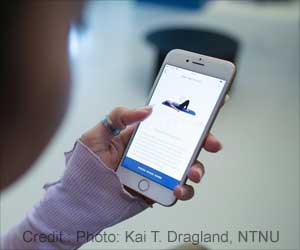Robots that can cook, dance to Michael Jackson songs or guide the blind are among the gadgets aimed at helping humans cope with illnesses on display in Spain at one of the world's
At one of the world's biggest annual gatherings of new technology enthusiasts currently held in Spain, on display you will find gadgets aimed at helping humans cope with illnesses. These new age 'robots' can cook, dance to Michael Jackson songs, and even guide the blind.
Standing 58 centimetres (23 inches) tall and with a plastic shell for a body, a humanoid robot called Nao drew a crowd at the Campus Party in Valencia as it danced to Jackson's "Billie Jean" with a black hat on its head."I am thrilled to be at the Campus Party!" it said in in a mechanical voice in English.
The robot can recognize voices and faces and be instructed to turn on a personal computer, read e-mails or an online newspaper as well as be used to stimulate sufferers of Alzheimer's disease with memory exercises.
"It is a companion robot; at the same time it is a robot that can help with day to day tasks," said Romain Daros of French firm Aldebaran Robotics which designed Nao.
The company plans to start selling the robot in 2011 for between 3,000 and 3,500 euros (4,200 and 4,900 dollars).
Another star at the week-long event which wraps up on Sunday is a robot covered in artificial white fur called Paro that resembles a seal pup which can perceive people and its environment.
It was designed by Japan's largest public research organization, the National Institute of Advanced Industrial Science and Technology, with the aim of helping people with cognitive problems like autism or dementia.
It is also useful in engaging children in pediatric wards and can help people with autism, who struggle to communicate socially and have trouble understanding facial expressions, learn how to interact better with others.
"A seal was chosen because it does not arouse any emotional memories, like a dog or a cat would," said Ignacio Villoch, the marketing director of Spanish bank BBVA's innovation centre which is presenting the robot in Spain.
Paro is already available for sale in Japan and several northern European nations.
Just several metres (yards) away Sylvain Calinon of Switzerland's Federal Institute of Technology presented his robot, a "chef" that can cook.
Calinon said that unlike other robots, his "learns new gestures by imitation, by observation, without needing an intermediary" like a computer programmer.
The robot has already learned how to beat eggs and cut ham to make an omelet.
"We can imagine for example that it could feed people who can't feed themselves with their own hands," said Calinon.
The gathering at the futuristic "City of Arts and Sciences" also provided space for non-professionals to display their creations and many were also designed to aid ill or handicapped people even if they were more rudimentary.
One of them, Jose Alberto Garcia, proudly showed off his three-legged robot called Invigbot which emits a sound when it approaches an obstacle.
"He was conceived to serve as a guide for the blind," the 22-year-old said.
Around 6,000 people are expected to attend the Campus Party, which unites participants from all over the world to share ideas, experiences and all types of activities related to computers, communications and new technology.
The annual event began in Spain in 1997. Editions of the event have since been held in Brazil and Colombia.
Source-AFP
TAN
 MEDINDIA
MEDINDIA



 Email
Email




